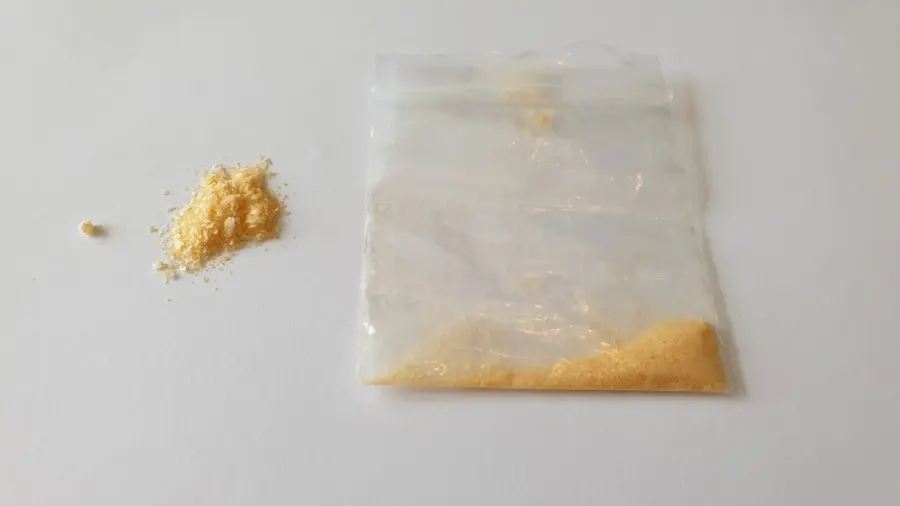Synthetic Cannabinoids #
Textbook Definition: Synthetic cannabinoids are substances that act upon cannabinoid receptors, creating effects which can be perceived as similar to those of the cannabis genus in one or more respects.
The following chemicals have been sampled and researched for inclusion within this section:
The definition printed above isn’t the usual single sentence description that is presented across the media, and frequently online. I have chosen those words particularly carefully.
More common and less precise forms imply that these chemicals closely mimic or replicate cannabis, often using the term “synthetic marijuana”, or similar. This is extremely misleading. Under influence, some aspects of the cannabis experience are present, with emphasis on some, but the overall effect is distinctly removed.
The picture on the ground, the real situation, is far more complex than is often understood. It is steeped in the social and political history of cannabinoids as a whole, and has been sculpted largely via legislation. Indeed, it seems unlikely that this class of drug would ever have emerged (recreationally) had cannabis itself been legally available.
My own first port of call was JWH-018. This was procured from head shops, was sealed in bright glossy packets, and was marketed under the original Spice brand. The smoke itself wasn’t too bad in most respects, and inhaling material that smelled like flowers and tasted like scent was novel. It seemed harmless enough.
The effects; yes, they were cannabis-like, but with facets missing, and significantly, there was a rougher edge to proceedings. There was also an artificial type aura to it, which was subtle, but present.
When this fell foul of legislation, other chemicals emerged. These tended to be harsher. Perhaps stating that they were one-step removed from JWH-018, and several steps further from cannabis, is a reasonable way of describing them.
As this cycle of creeping legislation continued, the synthetics tended to become stronger and stronger, and further and further removed from the real deal. Many of them eventually became highly addictive, and were increasingly dangerous.
Simultaneously, hidden dose fluctuations often occurred due to the irregular concentration of the chemicals on the smoking materials upon which they had been sprayed. This was another contributory factor to the significant increase in the number of overdoses and fatalities.
In terms of personal research, despite what I considered to be due diligence at the time, I nonetheless endured a couple of harrowing experiences. Following the second, I stopped researching this class of chemical completely and permanently.
I will make my advice with respect to synthetics as clear and unambiguous as I can: stay away from them. In stating this I recognise that there are those who do navigate and use them without serious issue, and who do not agree with this blanket assessment, but I would stress that my opinion is based on a generic risk versus return model, and that there is invariably room for exception.


Shortly after legislation forced the sale of cannabinoids underground, an epidemic of addiction took hold amongst the homeless in the UK. The photographs above were amongst a set taken by the author in the centre of Manchester. An interview was attempted for the purposes of this book, but the desperate and unfortunate user was barely able to talk. He was living a hell.
A few days earlier, the local newspaper, quoting the charity Lifeshare, had stated that “95 per cent of young homeless people are on Spice” and cited 26 related ambulance calls in a single day.
Meanwhile, in Westminsiter, politicians were preening over their latest successes in hardening their war on drugs. Their allies in the media continued to blame and besmirch the broken victims.
A civilised society would be helping these tortured souls, not punishing them.
A HUGELY DISTURBING INCIDENT #
A few years after the publication of the first edition of this book I was involved in a drama relating to a third party. Specifically, I retrieved the following item from the scene of a person having a seizure, which despite medical sedation, was repeated over some hours. This was a horrific and hugely distressing spectacle to witness.

According to subsequent lab analysis this compound proved to be MDMB-4en-PINACA, with some 4F-MDMB-BINACA also thrown into the mix. Both were well known and widely available synthetic cannabinoids at the time.
With no testing, research or even weighing of his dose, the victim had eaten approximately two hundred milligrams of this (crystalline) powder. He ended up in a hospital resuscitation room, with a tube down his throat, a drip fixed to his arm, and wires attached all over the place. He survived: he was lucky. He later claimed that he thought he was buying mephedrone.

This of course re-enforces my words on the previous pages, and it isn’t where you want to be. If you intend to use a cannabinoid, I would suggest that you stick to the real deal (cannabis). From my experience it really isn’t worth the risk, and as documented on the following pages, even the ride itself is often unpleasant, and sometimes absolutely awful.